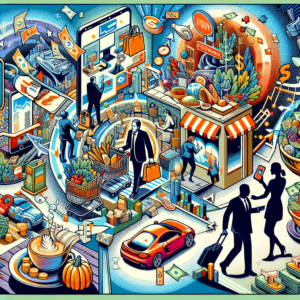The holiday season is approaching and with it comes an anticipated significant increase in consumer spending. According to a recent survey by the Organization of Consumers and Users, the average spending per person during these festivities is expected to reach 683 euros, of which a significant portion, 396 euros, will be dedicated solely to the purchase of gifts. However, 17% of respondents see the need to take a more moderate approach to their expenses this year.
To meet these expectations and optimize their sales opportunities, many brands are choosing to open pop-up stores, which are temporary establishments that operate during the holiday season. This strategy has been analyzed by the real estate consultancy Laborde Marcet, which notes that occupancy in retail has grown by 1.8% compared to the previous year. These stores are located in high-traffic areas, allowing merchants to maximize their sales during what is considered the busiest shopping period of the year.
Gerard Marcet, founding partner of Laborde Marcet, indicates that pop-up stores typically operate for a maximum of two months, thus capitalizing on the intense demand in December. However, this trend is reversed in the following months, as January and February are not known to be the most conducive for opening new businesses.
Despite the decline in consumption that usually occurs after the holidays, characterized by what is known as the ‘January slump’, Marcet suggests that this period can be ideal for investors to seek new business opportunities. Economic conditions tend to be more favorable during these months, offering chances to find commercial spaces in high-demand areas with optimal terms.
Thus, while consumers prepare to enjoy the holiday celebrations, brands and merchants are adapting to market dynamics, implementing strategies such as pop-up stores to make the most of the purchasing potential during this time of year.
Referrer: MiMub in Spanish











